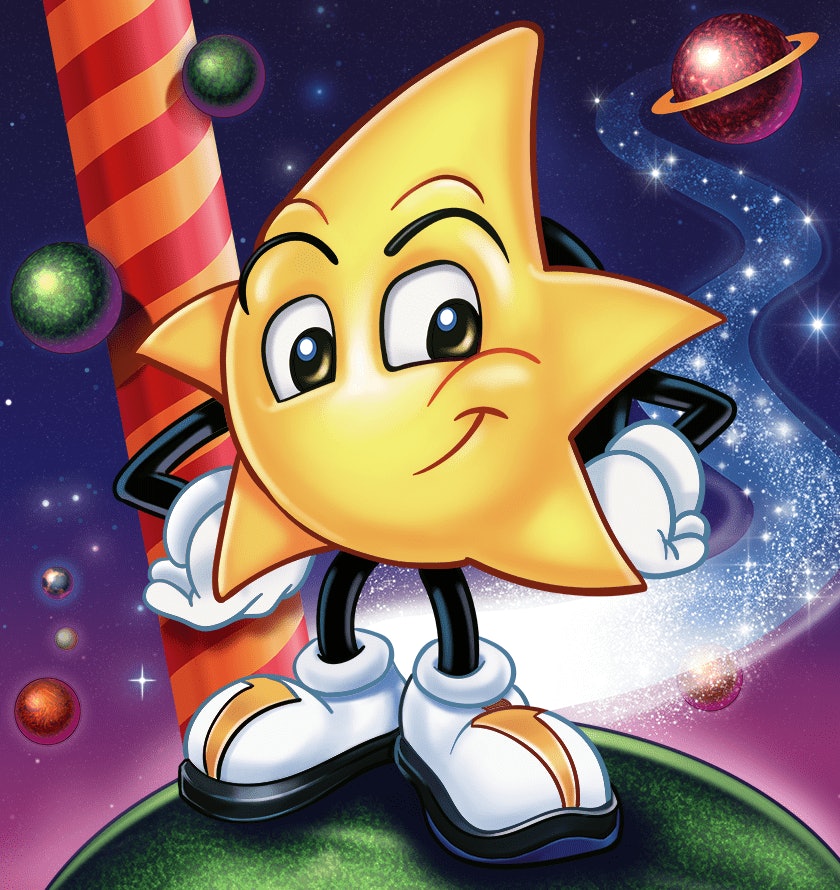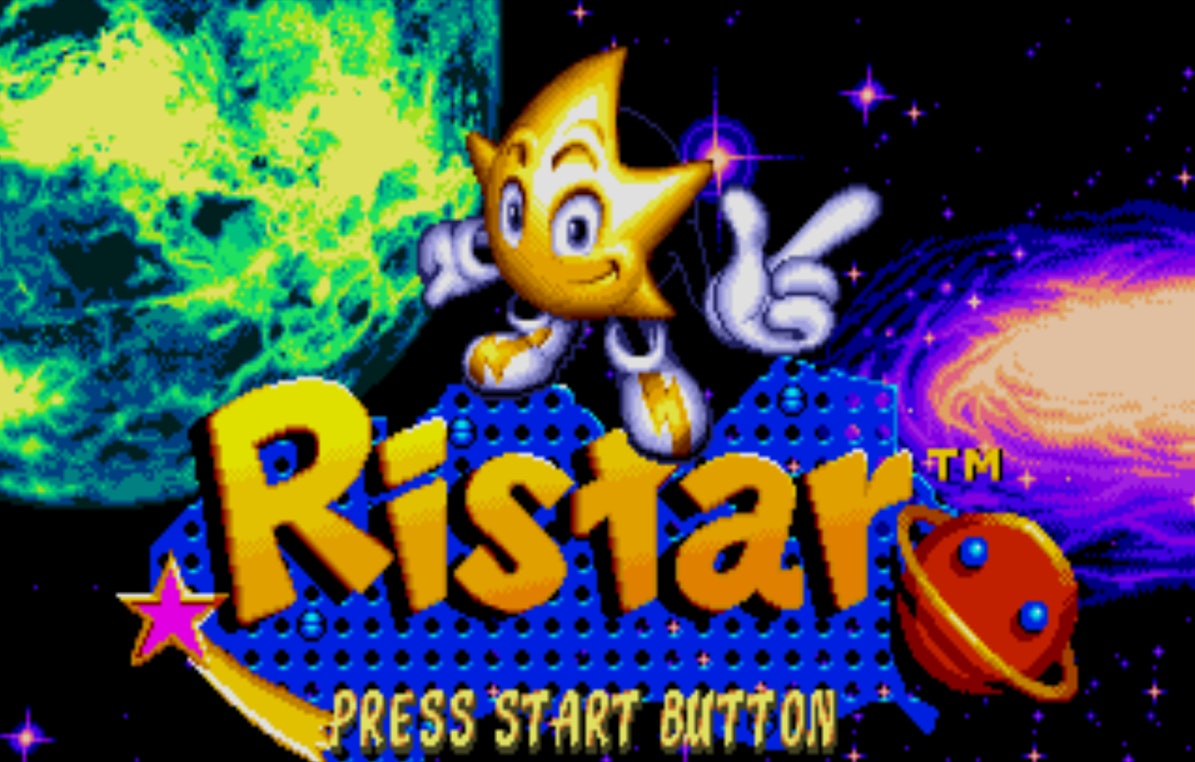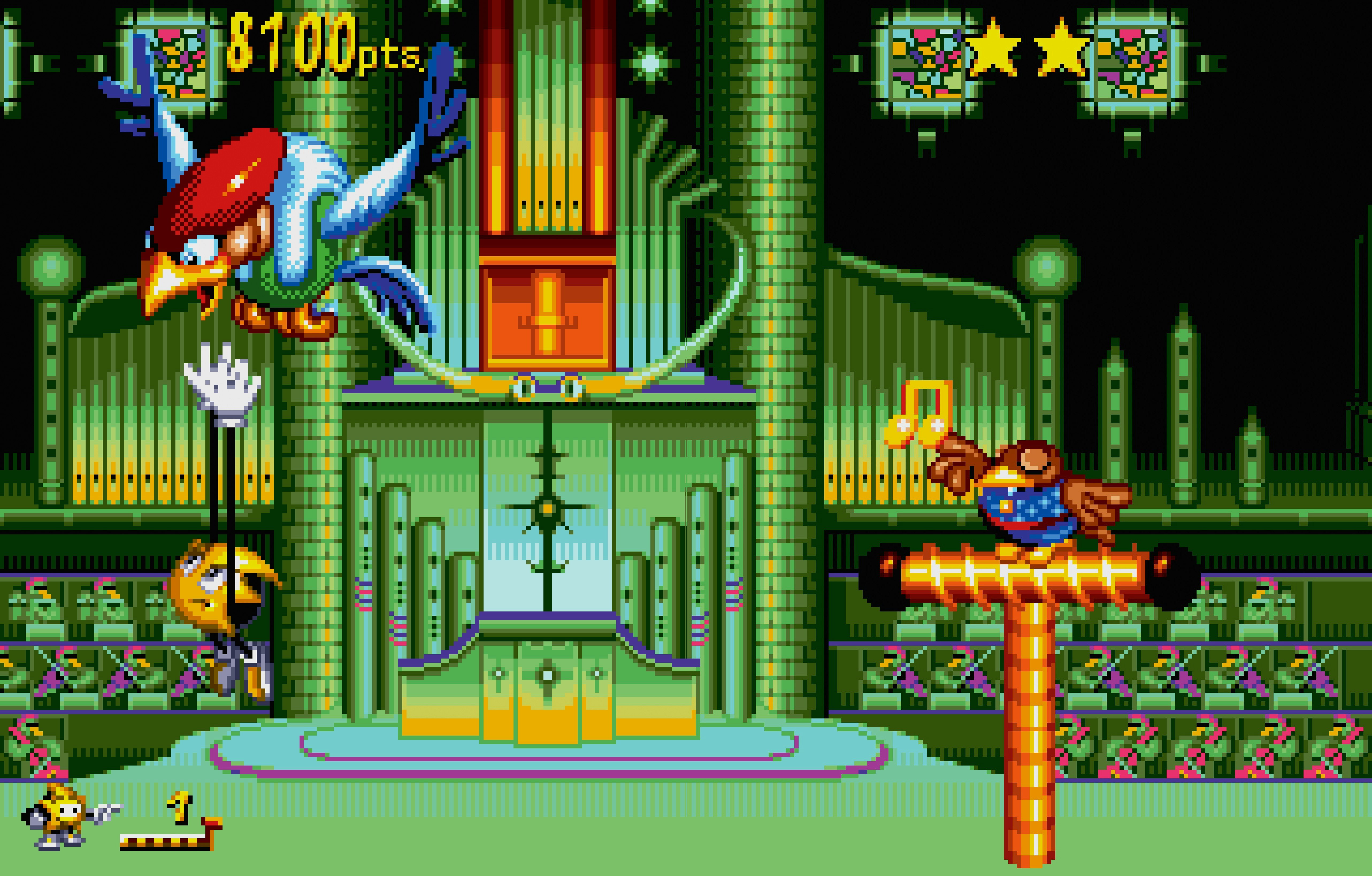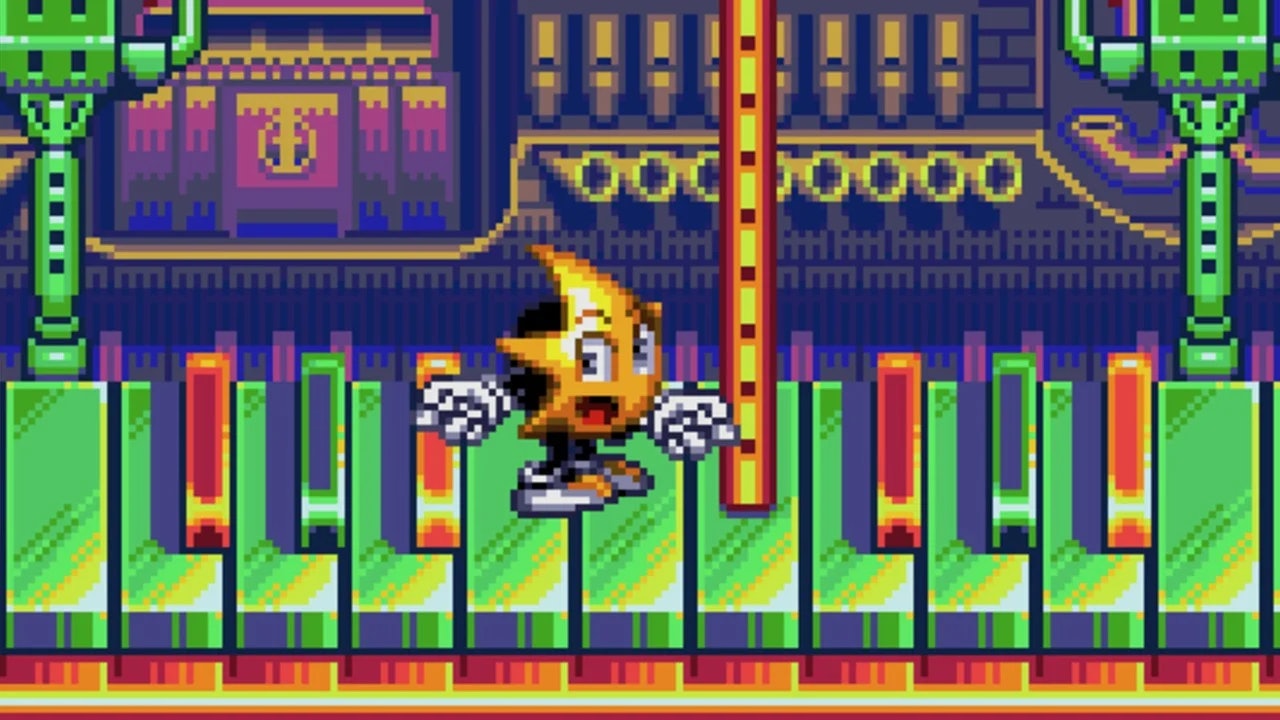
By 1995, Sega had cornered a piece of the video game console market all for its own. This was no easy achievement. Sega had tried over and over again to prove that its 16-bit system — known as the Mega Drive in Japan and the Genesis in America — could do what Nintendon’t. Sometimes that meant trying to expand the idea of what was possible with a game console, like online gaming and banking. In these cases, Sega’s ambition leaped ahead of the technology at the time.
But where Sega had gotten a big hit was Sonic. With Sonic and Tails, the 16-bit era was the perfect match. The hedgehog with attitude had exploded into a phenomenon that, if not rivaling Nintendo’s Mario, was a force in its own right. By 1994, Sega was hosting lavish competitions at Alcatraz Island for Sonic & Knuckles. Platformers were its pride and joy, and the company wanted to explore adding more mascot-type characters in the same style.
By 1995, it had another: Ristar.

The game starred a literal walking star with stretchy arms, and it could easily have been another Sonic. But Ristar got caught up in greater industry trends, namely Sega’s determination to not fall behind as consoles entered their fifth generation. Ristar was released only three months prior to the sale of the next-gen Sega Saturn, and who wanted to be caught with a game whose obsolescence was already being heavily marketed? Not many people, that’s who.
But for the few who were curious, they found a fun platformer with easy-to-grasp mechanics. It’s not the creative wellspring that other Genesis games aspire to become, but it is fun to play, and it's available right now if you’ve subscribed to Nintendo Switch Online + Expansion Pack.
In a way, Ristar is actually Sonic’s kid brother, or at least his cousin. Back in the early ‘90s, when trying to develop a new mascot, Sega had first considered a rabbit with ears that could stretch out and grab objects. Sonic development embraced the animal aspect of this early character. Ristar embraced the ears.

Ristar’s plot involves faraway galaxies and an evil space pirate named Kaiser Greedy who uses mind control. In the American version of the game, Ristar’s father is actually the big hero, but now the young child has to step up and grab the mantle for themselves. And grabbing things is exactly what Ristar does best.
The two things that become instantly clear about Ristar is that he’s a star and that his hands go every which way. Ristar’s arms elongate and come back to his body. Anything that’s useful, like an enemy, a ladder, or a treasure chest, can be taken through grabbing. Occasionally, Ristar can knock something down with his body, but the game is based around his grabbing and grappling things.
It can be a fun challenge to time a grab just right, like when a bird is dropping bombs overhead. Ristar finishes opponents off with an aggressive headbutt, knocking them into the ether, and it’s especially satisfying to slam one right after you’ve piggybacked off them to cross some dangerous terrain.

The stages also provide some complexity, with simple puzzles needed to open access to areas in water or jungle levels. The level design, which moves between the natural, technological, and surreal, very much resembles the levels in Sonic games, right down to the jazzy introductions each level gets. Instead of loops to run around, Ristar has poles he swings on, spinning around and around to get through areas.
But taking ideas from Sonic is hardly a bad idea. Ristar feels like it needs one more idea, like power-ups, to truly take it to the next level. But the game was caught in between tectonic shifts in a fast-moving industry and never found the base of support it would need to develop these concepts for a sequel. But it’s here again, and worth playing to explore one of Sega’s many ‘90s what-ifs.







